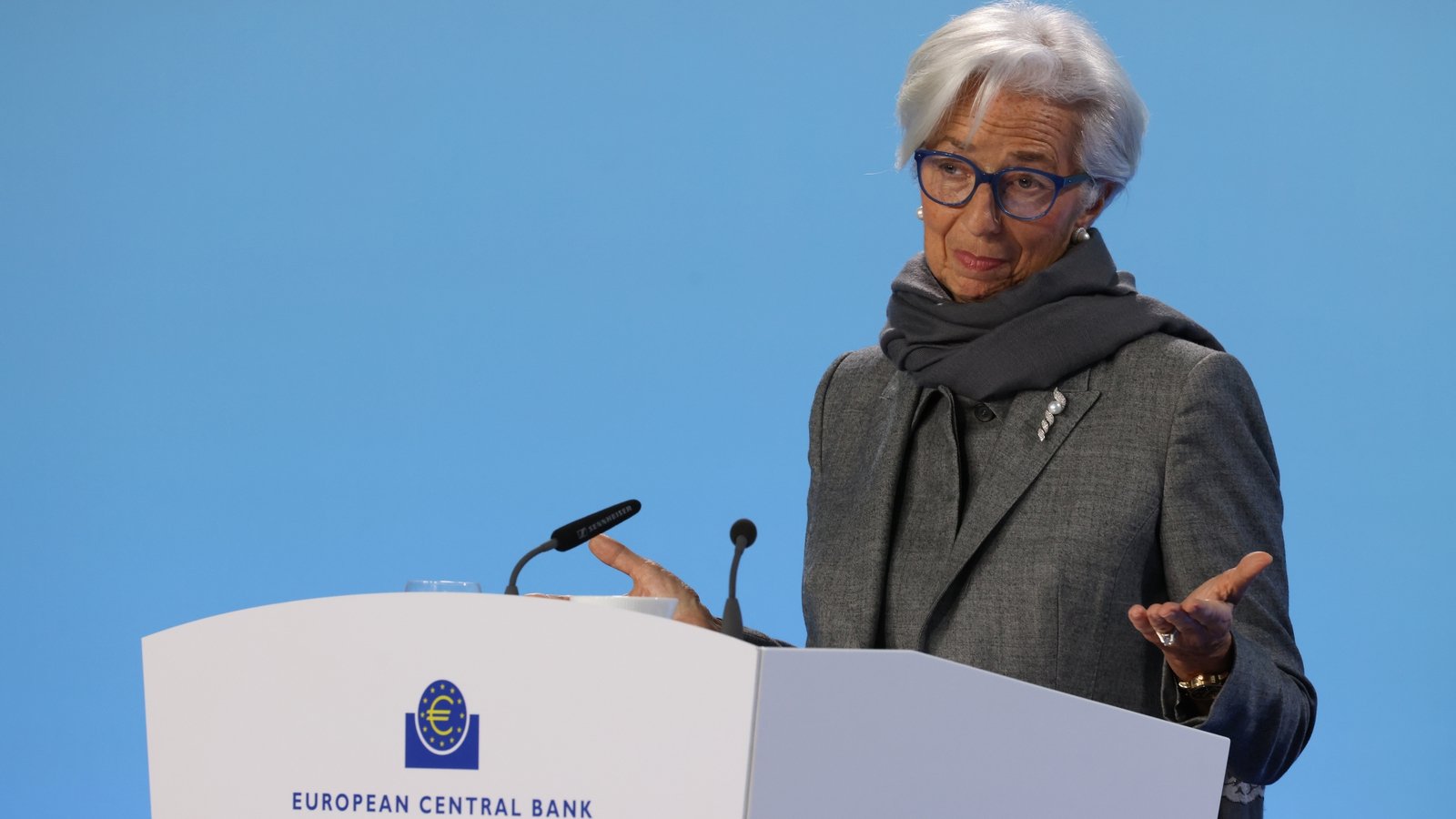Are we there yet? ECB on the cusp of cutting rates

It feels like it has been a long time coming, but finally it looks like the European Central Bank might be in a position to start cutting interest rates from their record highs this week.
It’s almost two years now since ECB President Christine Lagarde started the bank out on the rate hiking path, bringing its deposit rate from negative territory to a record high.
Tracker mortgage holders have borne the brunt of every one of the ten rate hikes introduced since mid-2022 and will be eagerly awaiting the first cut in years, as well as hoping for many more to come.
Fixed-rate mortgage holders, who may be coming out of a fixed period in the coming months, will be entering a vastly changed landscape, but they will be hoping for a rates environment that more closely resembles that when they previously fixed.
And depositors will likely have a narrowing window in which to secure the best returns on their savings.
Inflation mantra
The ECB was widely regarded as being rather late to the game when it came to rate hikes.
The Bank of England had started raising rates at the end of 2021, against the backdrop of rapidly rising consumer prices, and the US Federal Reserve followed course in March 2022.
When the ECB got round to hiking in July of that year, they did do with gusto, announcing an initial hike of a half a percentage point, bringing the deposit rate back to zero – from -0.5% – in one swift move.
Nine further increases followed that first rate hike in eleven years, bringing the deposit rate to 4% and the main refinancing rate – which is used to price trackers – to 4.5%.
The ECB’s purpose was clear and precise – to tackle soaring inflation.
“We will raise interest rates for as long as it takes to bring inflation back to our target,” Ms Lagarde said following that first rate hike.
And the bank remained committed in its resolve. Not even the collapse of Silicon Valley Bank and the contagion – albeit fairly contained – to the wider banking system was enough to convince the bank to sit out its hike in March of 2023.
The bank brought its hiking cycle to a conclusion in September of last year. Since then, speculation has centred on when they might start trimming rates.
Will they, won’t they?
There have been false dawns along the way.
At the turn of the year, it was taken almost as a given among market players that a rate cut was coming in March of this year.
The rate of inflation had fallen back towards the 2% target favoured by the ECB much faster than expected, only for it to jump again the following month.
A March rate cut slipped off the agenda and attention quickly turned to June.
At this juncture – barring any major upsets – a rate cut this coming week is regarded as all but inevitable.
Many broad hints have been dropped along the way.
“No prescription, no commitment, but it is a case that if the data that we receive reinforces the confidence level that we have – that we will deliver 2% inflation in the medium term, which is our objective, our mission, our duty – then there is a strong likelihood [of a rate cut],” Christine Lagarde told Miriam O’Callaghan on RTÉ’s Prime Time last week.
That was followed by comments just days later from ECB chief economist Philip Lane, a former Governor of the Central Bank of Ireland, who doubled down on that message.
“It has been reasonable for us in the last few weeks to basically signal that, barring major surprises, many people on the Governing Council, including myself this morning, have indicated there may be enough in the data to say we can remove the top layer of restrictiveness,” he told an audience at the Institute of International and European Affairs in Dublin.
Neither would be drawn on how many cuts might be forthcoming this year saying decisions would be ‘dependent on the data’.

How far, how fast?
The speculation has already moved beyond Thursday and to how many cuts can now be expected for the remainder of this year.
“Barring a surprise, the first rate cut in June is a done deal, but afterwards we have several degrees of freedom,” French Central Bank Governor Francois Villeroy de Galhau said this week, displaying notably less caution than his colleagues.
He said the ECB had scope to ease policy, and expectations that the deposit rate could halve to 2% were not outlandish.
“We have significant room for rate cuts,” he added. “From today’s perspective, my feeling is that present market expectations for our terminal rate are not unreasonable.”
However, some market analysts have turned decidedly conservative and are now pricing in just one more rate cut this year after June.
That would mark quite a turnaround from the situation earlier this year when up to six cuts were expected.
What does it all mean for mortgages?
News of successive rate cuts coming thick and fast would be music to the ears of tracker mortgage holders.
Watching their mortgage repayments jumping month on month to levels not seen in years has not been fun.
“Things do look promising for rate cuts,” Alison Fearon, Managing Director of mortgage switching platform, Switcheroo said.
Referencing the ECB’s own Survey of Professional Forecasters, she said a cut of 25 basis points (0.25%) could be expected this week followed by a further three cuts of a similar magnitude later in the year.
“For tracker customers, these rate reductions will be a welcome relief with each rate cut reflecting an annual savings of almost €510 for a mortgage of around €300,000,” Ms Fearon calculated.
“A full 1% drop by year end would provide a welcome extra annual saving of €2,000 for Christmas,” she added.

What about fixed mortgages?
This is where things get a bit more uncertain.
The main lenders here will point to the fact that they did not pass on the full extent of rate hikes to their non-tracker mortgage products and the increases that did come about were not immediate.
So, does that mean that they will be slow to cut their product offerings when rates do fall?
Finance Minister Michael McGrath told Morning Ireland in the last week that, while tracker holders would see the immediate benefit of any cut, he said he would “expect banks to reprice their products accordingly.”
Banks all over Europe have already started to reduce their pricing in anticipation of rate cuts from the ECB.
It appears the lenders here may be moving a little slower than their European counterparts.
According to the most recent set of figures from the Central Bank on European mortgage pricing, Ireland rose up the list of countries in Europe with the most expensive mortgages in March.
At 4.31%, the average rate on new arrangements here was 0.47% above the European average, putting Ireland sixth on the list of countries with most expensive mortgages in Europe.
Lenders here have moved since the compilation of those figures with PTSB, ICS Mortgages and Avant among those cutting rates while AIB and its subsidiaries and Bank of Ireland introduced a set of competitive green mortgage products.
Then there was the arrival of new lender, MoCo, which augurs well for enhanced competition in the sector.
However, as Rachel McGovern, Director of Financial Services at Brokers Ireland warned, there should not be any expectation that rates will go back to their pre-2022 lows.
“That was historically very unusual and it would be highly unrealistic to expect a return to that in the short term,” she said.
However, she said mortgage holders should be alert to better deals available on the market, which could yield tens of thousands of euro in savings over the lifetime of the loan.
“There are often individual circumstances which could mean that regardless of ECB changes you might be entitled to a better mortgage rate, for example, you could be eligible for a cheaper mortgage as a result of the value of your home going up leaving you with an improved, lower loan-to-value ratio or the BER rating on your home could entitle you to a better rate,” she pointed out.
And for those with deposits?
The final piece in the rate setting jigsaw, those with savings waited a very long time to get a better yield on their deposits, even as interest rates climbed.
Mounting pressure on the banks in late summer of last year saw them improving their returns to savers, but the enhanced offerings are mainly on so-called term accounts where an individual is required to put their money aside for a period of time in order to get the full benefit of the rate on offer.
Remarkably few savers have availed of the opportunity, opting to leave their money in low-yielding easy access accounts and, in turn, helping the banks to the very healthy profits that they have reported in the last two years.
Time could now be running out for depositors to take advantage of the improved rate offerings. As rates on mortgage go down, so too will the rates of return that banks offer on deposits.
That which is good for those with borrowings is not so good for those with savings. It’s all part of the interest rate merry go-round, which is on the cusp of doing an about-turn.





